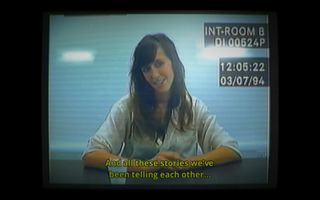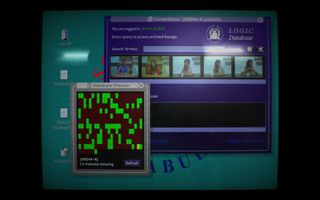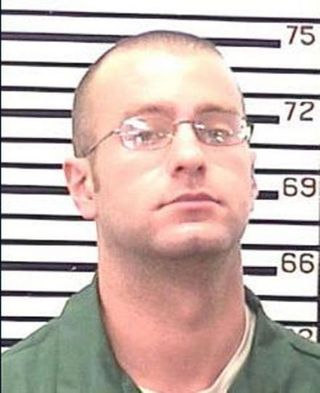
The seven police interviews which, sliced up, become Her Story, were shot over the course of a week, roughly in chronological order. Barlow says the easy part was finding locations for the interrogation rooms, because “everywhere has crappy looking rooms”. Once it was done, Seifert says they felt like that was actually the point they should be starting. “We were like: ‘Okay, that really should just be the rehearsals, and now we’re ready to film’. But we had done it.”
In fact, the shoot happened so fast that it was only midway through that she felt the pressure. “It really dawned on me that, shit, the whole game is hinging on these words and this performance. So I felt a huge responsibility, and Sam was saying, 'how did I feel about doing something that was going to be seriously scrutinized?'” They needn’t have worried about the response. It’s been little short of rapturous. Seifert laughs at the idea of being recognised by players, but given Her Story’s success it’s surely a matter of time.
Devil in the detail
One of the interesting things about Seifert's performance is how little mannerisms creep in during different interviews, steering the player into making certain associations. I ask if this was deliberate. “That definitely did occur as we were going on,” she says, before clarifying that the little tics were a mix of planning and the performance developing organically. “I just went with it, and let my body do that, and I think especially now looking at clips I can see there is so much in the movements I’m doing … so it was aware-slash-unaware.” Barlow agrees that “there was some stuff that we discovered fitted certain modes.”
“I knew that it wouldn’t work if there was one golden clip”
During filming, Barlow played the part of the cops, though their voices are never heard by the player. It would be fascinating to know what those questions were, but Barlow says he could only see them being released as part of some sort of extended edition or art book, and certainly not with his voice still attached. Prior to shooting, he amassed lots of Google docs and notepads containing keywords and timelines, so it’s been interesting seeing players create their own spider diagrams and word clouds: “because that’s how it was written.”

You need to keep track of information in Her Story because it has a cascading effect. A word in one clip will lead to another, which will prompt another line of inquiry, and so on. Some will be dead ends, but eventually you build up this fractured kind of gestalt view of what happened. The most important words act as gates, preventing players from finding critical clips too early in the investigation (unless they get very lucky), which means no two people experience Her Story in quite the same way. But there isn’t a single, ‘silver bullet’ clip which nails the whole mystery. Some are more important than others, clearly, but there’s no equivalent of a Poirot-style drawing room scene.

Convicted of killing his father and attacking his mother with an axe in 2004.
That wasn’t the idea early on, though. Barlow explains that initially he planned to have the player working towards a definitive resolution. “I was thinking ‘this is a murder mystery, this is a detective thing, you’ve got to decide what happened and that’s the solution and that’s the end’. So maybe you’re building up towards the confession.” That approach changed after he conducted a test using the transcripts from an actual crime, the Christopher Porco case, which he chopped up and put into an early version of Her Story’s database structure.
“There were just layers coming through in his language and the stuff he was talking about, even if he was talking about unrelated things about his friends at school, his favorite movies, what he did on the weekend. Words about money, and just all these things kept coming to the surface, and so the database format kept pooling things and themes and threads. When I saw how interesting that was to me as a player, at that point, I felt like, OK, let’s move beyond the clearly scripted stuff and let’s embrace this.”
The biggest gaming news, reviews and hardware deals
Keep up to date with the most important stories and the best deals, as picked by the PC Gamer team.
Confident that the structure would work, he set about creating transcripts for his own plot to put into the database. “I knew that it wouldn’t work if there was one golden clip,” he says. Aside from the fact that clip would inevitably just be shared socially, Barlow argues the allure lies in uncertainty, comparing Her Story to the Serial podcast, which he only listened to towards the end of making the game. “I knew that what was interesting about Serial is that, as of now, there isn’t necessarily a definitive solution,” he says. “People lean towards certain interpretations, and there are things that are definite and things that are questionable, but what makes it interesting is the extent to which it lives on in your imagination.”
With over two decades covering videogames, Tim has been there from the beginning. In his case, that meant playing Elite in 'co-op' on a BBC Micro (one player uses the movement keys, the other shoots) until his parents finally caved and bought an Amstrad CPC 6128. These days, when not steering the good ship PC Gamer, Tim spends his time complaining that all Priest mains in Hearthstone are degenerates and raiding in Destiny 2. He's almost certainly doing one of these right now.
Most Popular




